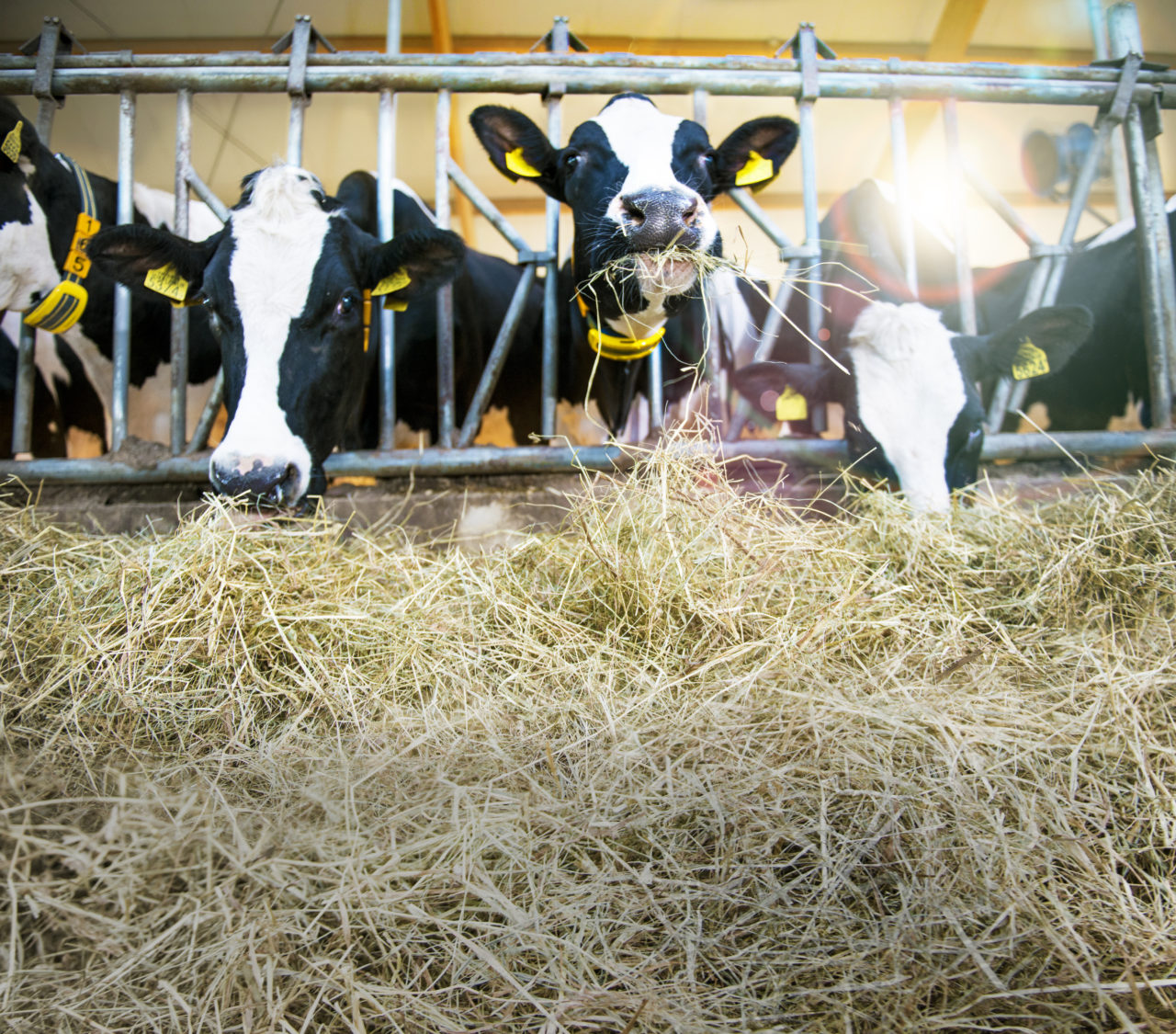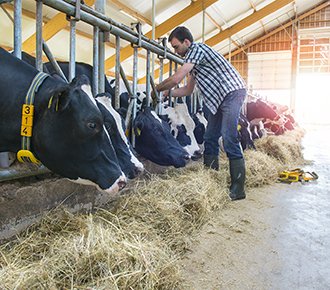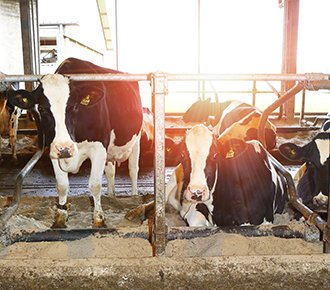- Sense of Sensors study
Making sense of sensors in transition cow care
Activity sensors can detect more data than needed just for heat detection
They can provide useful information to support farm management on different levels.
Three years ago we started an extensive field study using activity sensors in transition cows. On eight farms, all cows have had both a leg and a neck sensor tag since 2016. Data from the sensors is collected, and all farms are visited weekly to gather clinical data and blood samples for ketosis and calcium testing.
These dairy farms vary in size from 100 to 220 milking cows. Including dry cows, in total 1,200 cows are wearing the tags. Besides these farms, eight other farms are using one of the tags per cow, with a subset of cows wearing both tags. All farm data is collected from these herds as well.
In our field study, we are using commercially available tags that are produced by Nedap and sold under several trade names. These tags measure heat (activity), eating, rumination, nonchewing, lying, standing, steps, and number of times the cow stands up.
We are learning fast, but there are still a vast amount of discoveries and innovations to be done. In this article, we will share facts, applications, and some ideas with you.
Define the question
Transforming data from sensors into useful information starts with, “What question do you want to answer?” In daily, operational work, this question is “What should I do?”
The first point to consider is, “What does the data tell us?” We like to work with the structure of “feed back,” “process indicators,” and “feed forward.”
Feed back looks backward. It consists of results and outcomes. You can learn from it, and you can use it to decide targets and thresholds, but you cannot steer on it. For that, you are too late, and the result is already there. Examples of this are calving interval, interval to conception, and percentage of cows with retained placenta.
Process indicators show how the process is going at this moment. You use it in your daily work. Examples of this are milk production per cow, dry matter intake, rumen fill, and insemination rate.
Feed forward provides information that will guide results in the future. When feed forward indicators are good, the process will produce results that match your end goals. When they are not okay, you will want to correct things. For instance, body condition score (BCS) during the dry period is feed forward for fresh cow problems. Foot health of dry cows is feed forward, as it needs to be good to prevent fresh cow problems. Feed intake, rumen fill, and BCS during the start of lactation are feed forward for the process of getting cows pregnant.

Search for sick cows
Finding functional ways to use the activity sensors requires excellent algorithms, a combination of data, and clear and simple presentation of useful information on farms. Useful means that the information triggers you to do something, or that you do something different than you would have done otherwise. When you have put good decision trees and protocols in place, it answers the question: “What should I do?”
The first area of use is to find sick cows. Can sensors replace people in detecting sick cows? Well, the sensors can give an automatic alarm, such as, “This cow has not been eating or standing for six hours.” This is a very helpful tool. But with proper cow observations, like monitoring rumen fill and milk production, currently available sensor technology will not often point out a sick or weak cow that you haven’t detected already.
Sensors can confirm your suspicion that a cow is struggling, though. Plus, they can give you a better impression of how sick a cow is and how long it has been having problems. People are still necessary to make the final call, but sensors add extra information to this process so they can make better decisions. When you are working with sensor information on a daily basis, you quickly become used to reading the graphs. And, thus, you rapidly will have developed a good estimation for a cow that is “okay” and one that is “not okay.” One farmer we work with said, “Sensors enable me to take better care of individual cows in a group.”
A common question in practice is, “When can a cow leave the fresh cow pen?” Sensor information can provide an answer, such as “When it has eaten well for at least three days in a row.” The definition of “eaten well” will depend on the ration you feed. It could be something like, “The cow has spent five hours eating, in at least seven bouts normally dispersed over the day, and it has chewed at least 12 hours per day.” Thresholds like this should be farm-specific but can be relatively easy to determine when monitored with the sensors.

Prevention is the best medicine
A sick cow gives you feed back; once the cow is already sick, you are too late. The real value of sensor data lies in prevention.
From a study by Geoffrey Urton and others in 2005, we know that cows that got metritis after calving showed shorter daily eating times 12 days before calving. Our first analysis with the sensors showed that these cows already ate for less time up to eight weeks before calving.
This knowledge provides us with the opportunity to identify “at-risk cows” within the dry cow and fresh cow groups. As a first action, the “at-risk cows” must get special care to reduce the chance that they really develop health problems.
The first interventions in at risk cows should focus on prevention of ketosis and hypocalcaemia. We haven’t figured out yet what is the best treatment. It looks like providing extra calcium orally, ensuring maximal feed intake by providing easy access fresh feed and water all day, and perhaps giving some extra energy via propylene glycol and/or monensin could all be successful in treatment. This is all in combination with excellent resting comfort, of course.
We are working on the answer to the question, “Why do these cows eat less than the others?” Our ultimate goal is to define success factors for a healthy transition period, including effective measuring points. An example of a target that sensors could measure would be: “Dry cows should walk at least 3,000 steps per day, rest 12 hours, and chew 16 hours. Variation within a group should be lower than a certain percentage, say 15 percent.” At this moment, this is hypothetical, and we do not yet know how to measure variation in behavior in a useful way.

There is more interesting stuff to come. The sensors can show group behavior patterns over the days and enable us to compare one day with the other. Cows are animals of strict routines, and the feedbunk should never be empty. This we all know, and sensors make it possible to monitor this 24 hours a day, seven days a week.
For this, you first look at behavioral patterns, which should be as identical as possible between days. And second, there should not be a long period where only a few cows are eating, followed by a long period with maximum eating activity.
Through our multiyear, multifarm field study of farms in the Netherlands, we hope to unveil more practical uses for sensors in daily farm operations.



